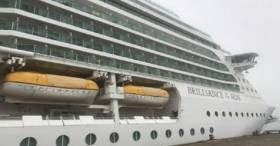Displaying items by tag: Boost to Tourism
#CruiseLiners - In north Wales a huge cruise ship has docked - giving thousands of tourists reports the Daily Post the chance to see the region’s sights.
The Royal Caribbean International ‘Brilliance of the Seas’, one of the biggest cruise ships to grace north Wales, returned to Holyhead Port for the second time yesterday.
People reacted with shock after seeing the 90,000 ton vessel, packed with tourists mostly from the USA, arrive in the port.
The same ship visited the port back in June, and the Welsh Government has said the cruise ship industry is one they are hoping to exploit.
Tourism minister Lord Elis-Thomas said: “It’s great news that Anglesey is welcoming passengers again today.
For more on the visit of the cruise caller, click here.
The RCI operated cruiseship Afloat adds is a new caller to the ferryport that serves Dublin, however the 2,112 passenger ship is not a stranger on the other side of the Irish Sea, having made a maiden call to the Irish capital back in 2002.
On that inaugural occasion in July, as reported for Ships Monthly (Oct. 2002) the brand new ship at almost 300m long made an astern (reverse) arrival to the port as then the ship was the largest cruiseship to enter the port. This berthing procedure was due to the confines of the port and also to enable an easy departure.





























































